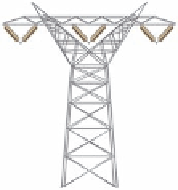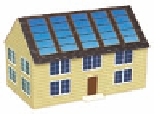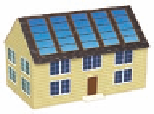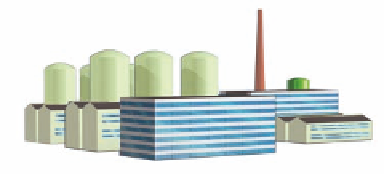Environmental Engineering Reference
In-Depth Information
First,
there will be a gradual shift from large, centralized
macropower systems to smaller, decentralized micropower
systems
such as small natural gas turbines for commer-
cial buildings, wind turbines, fuel cells, and household
solar panels and solar roofs (Figure 13-46). This shift
from centralized
macropower
to dispersed
micropower
is
analogous to the computer industry's shift from large,
centralized mainframes to increasingly smaller, widely
dispersed PCs, laptops, and handheld computers.
Second,
the best alternatives combine improved energy
efficiency and the use of natural gas as a fuel to make the
transition to small-scale, decentralized, locally available, re-
newable energy resources and possibly nuclear fusion (if it
proves feasible).
Figure 13-47 lists strategies for making
the transition to a more sustainable energy future over
the next 50 years.
13-8 A SUSTAINABLE ENERGY
STRATEGY
Global Outlook: What Are the Best
Energy Alternatives?
A more sustainable energy policy would improve
energy efficiency, rely more on renewable energy, and
reduce the harmful effects of using fossil fuels and
nuclear energy
In 1999, the International Energy Agency noted that
“the world is in the early stages of an inevitable transi-
tion to a sustainable energy system that will be largely
dependent on renewable resources.” Scientists and en-
ergy experts who have evaluated energy alternatives
have come to three general conclusions.
Small solar-cell
power plants
Bioenergy power plants
Wind farm
Fuel cells
Rooftop solar-
cell arrays
Solar-cell
rooftop
systems
Transmission
and distribution
system
Commercial
Small wind
turbine
Residential
Industrial
Microturbines
Figure 13-46
Solutions:
decentralized power system
in which electricity is produced by a large number of
dispersed, small-scale
micropower systems.
Some would produce power on site; others would feed the power
they produce into a conventional electrical distribution system. Over the next few decades, many energy and fi-
nancial analysts expect a shift to this type of power system. Proponents say that such a dispersed power sys-
tem is less vulnerable to terrorism and blackouts from hurricanes, floods, and other disasters.










































